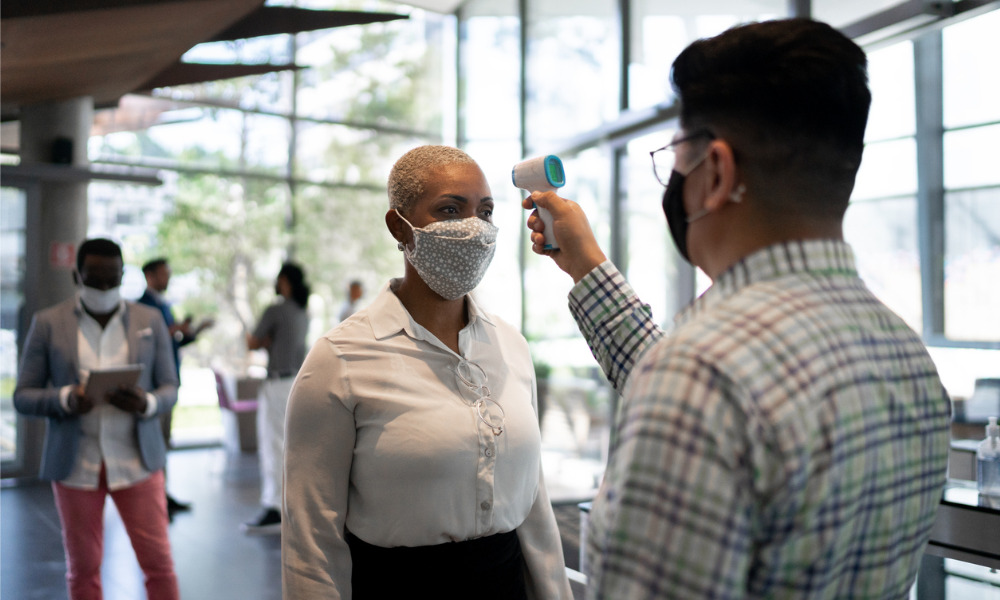
Employers can now bring employees back to the office – but should they?

NSW has lifted the statewide public heath order today, meaning businesses are no longer required to allow their employees to work from home.
It signals the state government’s desire to boost activity in Sydney’s CBD where the local economy has been hit hard by the sudden drop in foot traffic.
Before Premier Gladys Berejiklian’s announcement last month, many businesses had already committed to keeping employees home until the new year.
Staff at IAG, Australian’s biggest general insurance firm, will remain working from home until the end of January, while City of Sydney expects around 80-90% of its 2,000-strong workforce will return to the office by February.
But while there are benefits to returning to the office, employers could face serious legal ramifications if they do not take their health and safety duty seriously.
HRD spoke to Michael Michalandos, partner and head of Asia-Pacific employment at Baker & McKenzie about the legal considerations for employers trying to bring workers back to the office.
Under the Workers Compensation Act 1987, a virus like COVID-19 may be considered a disease, and if an employee were to contract it during the course of their employment, they could make a claim.
The employee would have to establish that the employment was the main contributing factor to contracting COVID-19, but interestingly, recent changes to the act mean that for a number of industries, it will be presumed that the worker became infected in the workplace.
Read more: Christmas party warning for employers: 7 tips to avoid a lawsuit
Those industries are wide-ranging, including the obvious ones like healthcare, aged cared and the retail sector, but also libraries, construction and courts.
Unless the employer can prove the worker contracted COVID-19 elsewhere, for example visiting a sick relative, it will be presumed the infection was caught in the workplace.
Michalandos said this presumption could prove tricky for employers.
“The important thing is if an employer hasn’t put in mechanisms to minimise contracting COVID-19, an employee could call SafeWork and report that, for example, employees are not maintaining social distance or they haven’t provided enough hand sanitiser,” he said.
“What employers need to do to comply will vary from industry to industry and particular industries will be regarded as high risk, such as healthcare.
“Employers should be logging onto the SafeWork website and looking at the specific requirements and risk assessments to ensure they are being COVID safe for their industry.”
The other issue is that with heightened duties under an employer’s health and safety obligation, employees who do not want to return to the office may start questioning whether their workplace is COVID-safe.
“Those who don’t want to be back in the office may start looking at how close people get to each other and if the measures are in place,” Michalandos said.
“The risk of a breach is going to be quite high so employers are going to face an interesting period.”
The changes to indemnity insurance for breaches under the NSW Work Health and Safety Act 2011 also plays an important factor.
Read more: Amazon leaked documents raise questions over Australia’s outdated surveillance laws
Companies can no longer rely on their insurance polices to cover the employer or employees in the case of a WHS breach and subsequent fine.
For businesses with a large workforce, it may simply be impossible to bring everyone back on the same day.
Close encounters in lifts and communal areas like toilets and kitchens all pose a high risk of breaching social distancing rules.
Then there is the question of how much sway an employer can have over employees while outside of the office.
The number of commuters on public transport during peak hours is steadily rising and will only continue as more and more employees return to the city.
HR leaders may have to consider whether requiring employees to wear masks on public transport, as has been recommended by the NSW health minister, may become a necessity in 2021.
Michalandos said while widening the presumption that COVID-19 was caught in the office is going to be problematic for some industries, the health and safety obligation goes both ways.
If an employee knew they were suffering COVID-like symptoms or had been around an infected person and ignored their duty to quarantine, they could open themselves up to legal action from both their employer and their colleagues if the infection spread.
“Under work health and safety employees must take reasonable care around others they work with in regard to the rules and regulations,” Michalandos said.